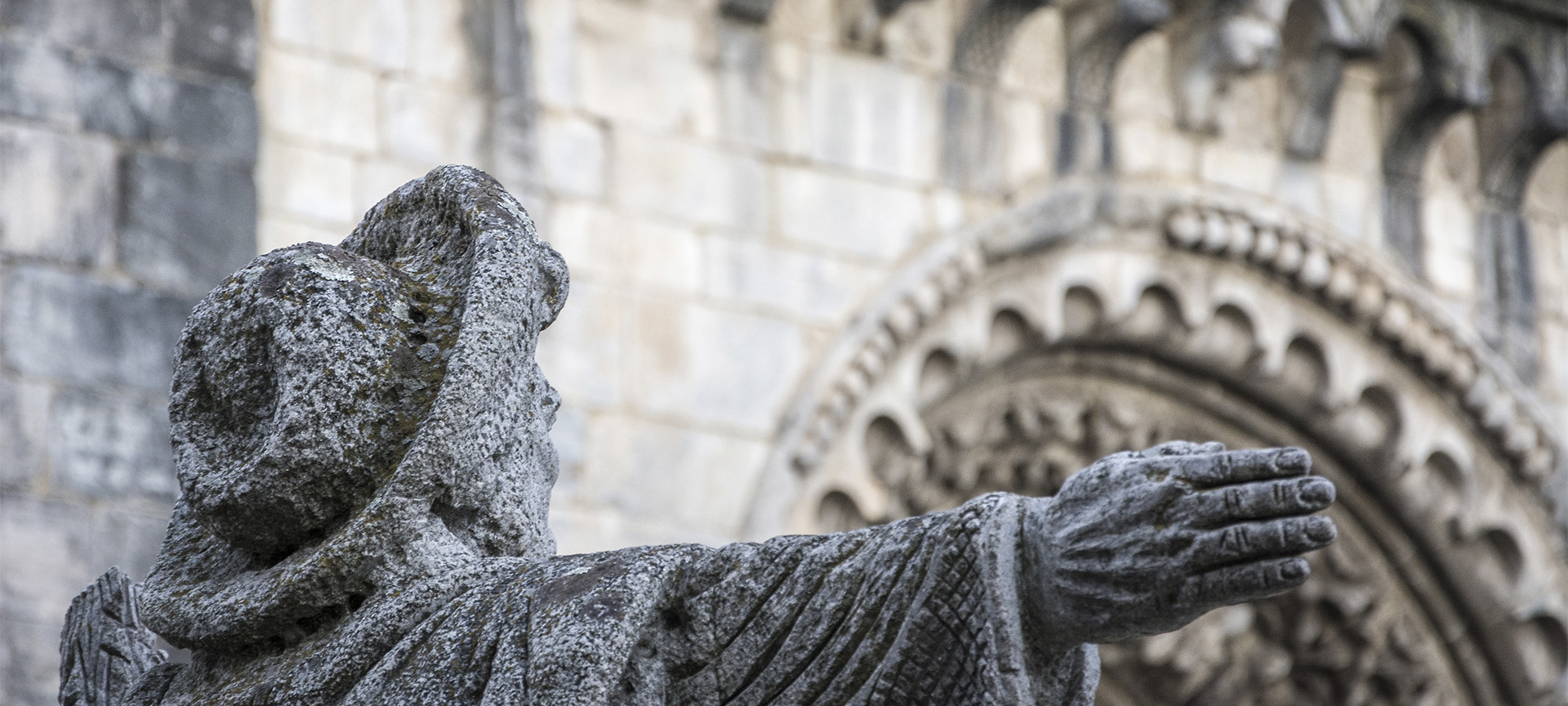
The reservoir of Belesar, on the river Miño, flooded the old village of Portomarín. Its main historic buildings were rescued stone by stone: they are the Romanesque church of San Pedro and the monumental church fortress of San Nicolás. Some of the old medieval palaces were also placed in the main square of the new town of Portomarín, located on top of a hill. The medieval bridge stayed underwater and all that remains is the base and one of its arches at the entrance to the new bridge.
The old Portomarín was formed by the medieval hamlets of San Pedro and San Nicolás (today San Xoán). The church of San Xoán or San Nicolao was built at the end of the 12th century by followers of the Maestro Mateo, -the façade is influenced by the Portico of Glory at the Cathedral of Santiago-, and has been declared a Historic-Artistic Site. The nearby church of San Pedro, which is Romanesque, dates from the 10th century. Close to the church of San Pedro are the palaces of Berbetoros and of the Marquis of Paredes. Out of town and away from the main group of historic buildings, it is worth mentioning other Romanesque churches: Cortapezas and Castromaior. Prominent among the popular architecture are the old slate houses and the traditional wine cellars, very common in this wine-growing region. But in Portomarín it is not the wine which is famous, but rather the local liquor, so renowed that they dedicate the Festa da Augardente to it on Easter Sunday.
What to visit
Select from the list or hover over the map to find out about points of interest.
Activa JS





